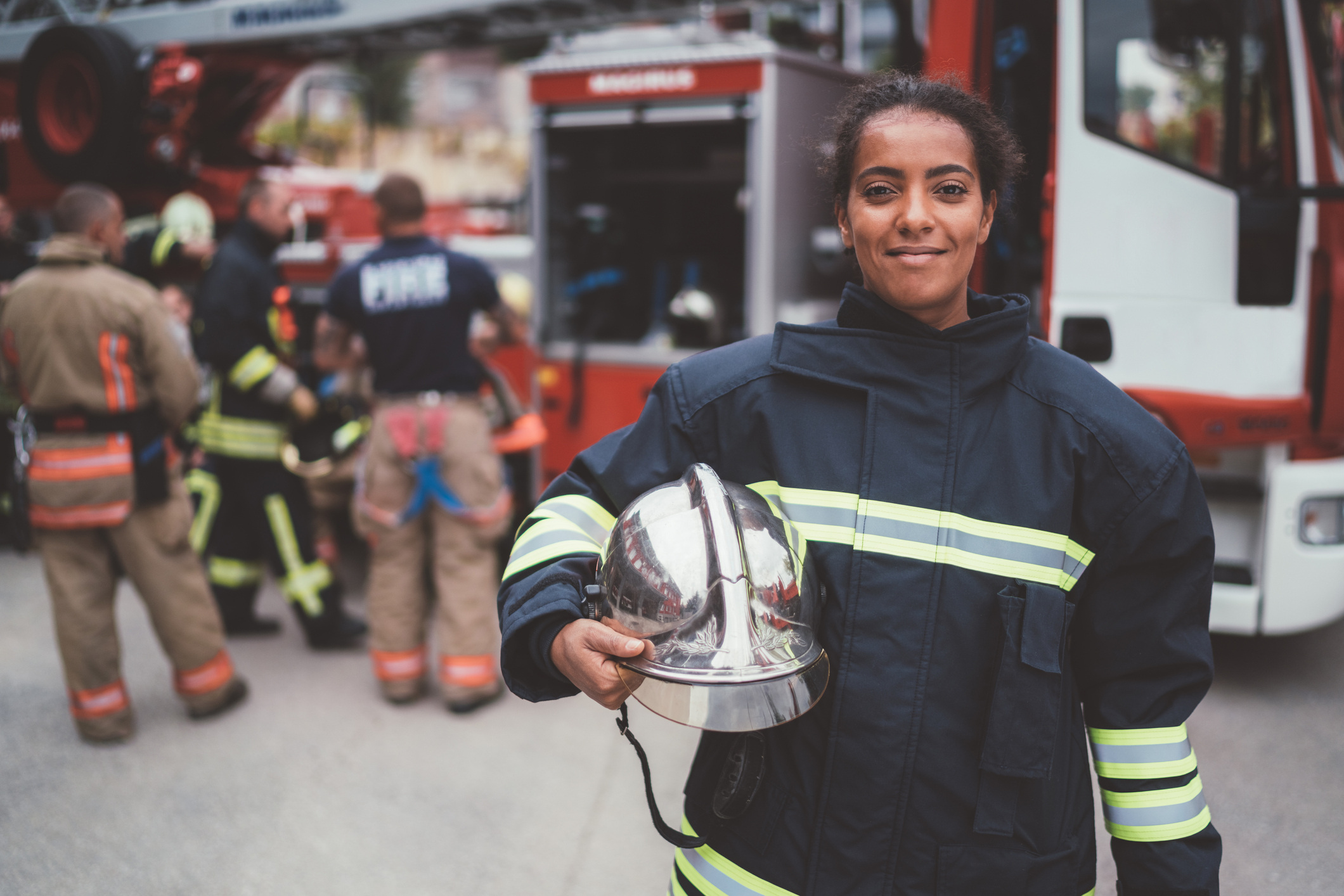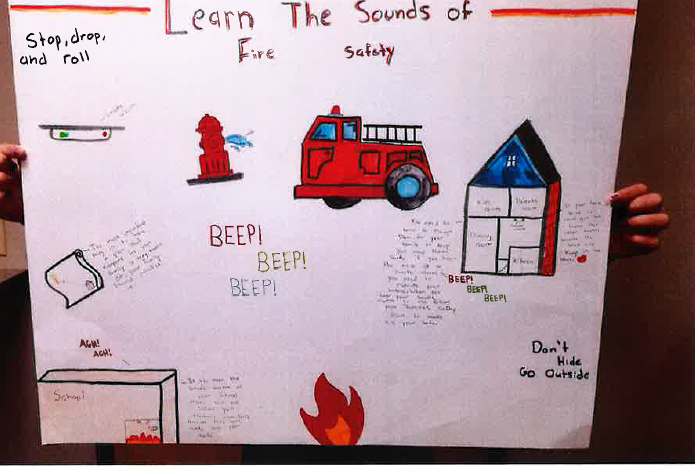In ensuring the safety and well-being of residents in public and affordable housing, collaboration with local fire departments is paramount.
This blog aims to provide guidance on how public and affordable housing organizations can effectively work with their local fire departments. It also introduces key fire department terminology to facilitate clear communication during emergencies.
Why work with your local fire department?
Establishing a strong partnership with these emergency response teams can significantly mitigate risks and enhance the overall safety of your housing communities. Potential benefits to your organization include:
-
Risk reduction: Fire departments have expertise in fire prevention, suppression, and emergency response. Collaborating with them can help identify and mitigate fire hazards, reducing the likelihood of emergencies.
-
Emergency preparedness: Fire departments can provide guidance on developing and practicing evacuation plans, conducting fire drills, and ensuring residents are well-informed about emergency procedures.
-
Rapid response: Establishing a relationship with local fire departments ensures quicker response times during emergencies, minimizing potential damages and enhancing resident safety.
-
Code compliance: Fire departments can assist housing organizations in understanding and adhering to fire safety codes, regulations, and standards to avoid penalties and ensure compliance.
Examples of effective collaboration
Collaboration between housing organizations and fire departments is crucial for several compelling reasons, all contributing to enhancing community safety and emergency preparedness. Examples of effective partnerships include:
-
Regular meetings: Meet with local fire department officials to discuss safety plans, potential risks, and updates on community developments.
-
Joint training: Conduct joint training sessions to familiarize fire department personnel with your housing layouts and emergency procedures, and vice versa.

-
Community events: Invite your local fire department to community events to foster positive relationships, increase safety awareness, and promote community engagement. For example, fire department personnel can conduct live demonstrations of fire safety techniques, such as fire extinguisher use, cooking fire safety, and escape planning.
-
Information sharing: Provide fire departments with up-to-date building layouts, access points, and any changes in resident demographics to aid in emergency response planning.
-
Drills and exercises: Organize fire drills and emergency response exercises in collaboration with fire departments to test the effectiveness of evacuation plans and identify areas for improvement.
-
Feedback loop: Maintain an open communication channel for feedback and lessons learned from each emergency or drill.
Emergency response overview
The National Fire Protection Association (NFPA) defines an emergency incident as any situation in which an emergency services organization responds to deliver emergency services, including rescue, fire suppression, emergency medical service, special operations, law enforcement, and other forms of hazard control and mitigation.
During an emergency incident, dispatchers in a call center send available resources to answer the call for service.
Some fire departments consist of strictly career firefighters, while others consist of volunteer firefighters or a mix of both. No matter their career status, firefighters are dispatched to emergency incidents based on the need and the resources requested.

Helping people in need is the backbone mission of these fire service workers. When a fire department responds to your property, understanding their terminology can be helpful when asking questions and looking for answers about the response.
Key fire department terminology
Fire department terminology aims to be uniform throughout the country, but some departments may adopt different language to meet the needs of their community and surrounding towns.
Incident command system: A fire department will quickly commence operations upon arrival at the scene of an emergency. The incident command system (ICS) is the standardized approach to the command, control, and coordination of on-scene incident management. ICS is the combination of procedures, personnel, facilities, equipment, and communications operating within a typical organizational structure, designed to aid in managing on-scene resources during incidents.
ICS is used for various incidents, no matter the size and complexity, as well as planned events. The ICS command structure creates a clear chain of command within the ranks of a fire department and any other agencies assisting in the emergency response.
Incident commander: The individual responsible for on-scene incident activities, including developing incident objectives and ordering and releasing resources, is designated the incident commander. The incident commander has overall authority and responsibility for conducting incident operations.
Incident command support staff: The incident commander oversees incident command support staff, who handle command functions at the designated command post. Typically, the following members of the command staff will be available to answer questions throughout the incident, when available:
-
Public information officer (PIO): Responsible for interfacing with the public and media, and other agencies with incident-related information needs.
-
Safety officer (SOFR): Responsible for monitoring incident operations and advising the incident command or unified command on all matters relating to operational safety, including the health and safety of incident personnel. The safety officer modifies or stops the work of personnel to prevent unsafe acts.
-
Liaison officer (LOFR or LNO): Responsible for coordinating with representatives from cooperating and assisting agencies or organizations.
-
Fire chief: The highest-ranking officer in a fire department responsible for overall management and decision-making during emergencies.
-
Fire marshal: An officer responsible for fire prevention, code enforcement, and investigation of fire-related incidents.
Fire service vehicles: A fire department response will bring various emergency response vehicles, or apparatus, to the scene. Incident reports typically include a detailed list of vehicles that responded. Knowing the different types of fire service vehicles can aid in digesting incident reports, leading to a better understanding of incident operations.

-
Command vehicle: Fire command vehicles are known as fly cars or fire chief's cars. A fire department's senior officer will be behind the wheel of these vehicles. When a call comes into the department, the senior officer will respond and assume command upon arrival.
-
Fire engine: Fire engines carry water–often hundreds of gallons at once–that firefighters can use to contain the blaze once they arrive on the scene. Various types of firefighting equipment can also fit on an engine, including hydraulic rescue tools and medical equipment.
-
Ladder truck: The ladder truck, or tower ladder, allows firefighters to reach greater heights to rescue victims and put out fires from above. In addition to a hydraulic ladder, ladder trucks will include ground ladders of varying lengths so firefighters can access small and large buildings.
-
Rescue/special operations truck: This technical vehicle is intended to transport rescue equipment. The range of equipment can include circular saws, cutting torches, cranes, high-lift jacks, winches, generators, wooden cribbing, and the jaws of life.
-
Brush truck: Brush trucks, or wildland fire engines, transport firefighters to the source of wildfires (also known as brushfires). A wildfire occurs in urban and rural areas and involves vegetation combusting. Off-road capabilities are necessary for this type of vehicle, as wildfires are often in hard-to-reach places within the wilderness.
-
Tanker/tender: Tankers and tenders hold water that firefighters can use to fight fires. The water source can come from a fire hydrant or nearby bodies of water, such as a lake or a stream. These vehicles can typically carry thousands of gallons of water and are utilized in areas that don't have a municipal water supply or fire hydrant nearby.
-
Ambulance: A vehicle specially equipped for taking sick or injured people to and from the hospital, especially in emergencies.
Bottom line: Stay in touch with your local fire department
Collaborating with local fire departments is essential for ensuring the safety and well-being of residents in public and affordable housing communities. By following the recommended steps and understanding key fire department terminology, housing organizations can establish effective partnerships, reduce risks, enhance emergency preparedness, and ultimately create a safer living environment for residents.
HAI Group Members: Should you have any further questions, please don't hesitate to contact your HAI Group risk consultant or local fire department for further information.
This article is for general information only. HAI Group makes no representation or warranty about the accuracy or applicability of this information for any particular use or circumstance. Your use of this information is at your own discretion and risk. HAI Group and any author or contributor identified herein assume no responsibility for your use of this information. You should consult with your attorney or subject matter advisor before adopting any risk management strategy or policy.






